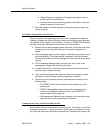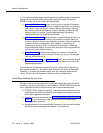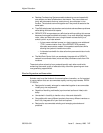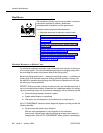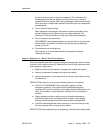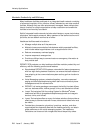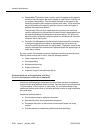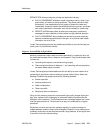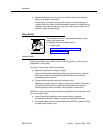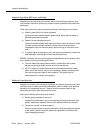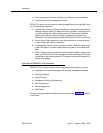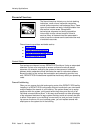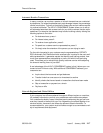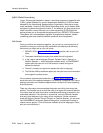
Healthcare
Issue 5 January 1998
2-11555-230-024
DEFINITY ECS offers an easy way to help the healthcare industry:
■ INTUITY CONVERSANT enables a health information hotline, which is an
audio library of health tips and procedures. This allows patients to help
themselves. It can separate calls into groups of those who need care
immediately, those who need to be scheduled with a physician, and those
who simply need basic information, such as the remedy for a bee sting.
■ DEFINITY AUDIX allows callers to leave non-emergency questions or
messages for later callbacks, so that callers can get personal attention.
■ INTUITY CONVERSANT allows healthcare facilities to provide physician
referrals, schedule appointments on the spot, or to provide basic health
information via voice or fax.
Lucent Technologies products help healthcare facilities to provide first-rate per-
sonal care in a cost-efficient manner.
Improve Accessibility to Specialists
Medical professionals often need to contact specialists in a particular field, but
are restricted because of time, distance, and expense. They provide better med-
ical care by:
■ Consulting with experts, sometimes during surgery
■ Overcoming boundaries of distance — by consulting with any physician,
no matter where they are located
Lucent Technologies provides healthcare with the ability to send video from a
remote site to specialists, without waiting for postal delays. Group Video and
Desktop Conferencing systems provide the following benefits:
■ Extend expertise
■ Improve patient care
■ Foster collaboration
■ Teach new skills
■ Save travel time and expense
Using a video camera, physicians can transmit high-quality images during sur-
gery over a phone line to colleagues at advanced medical centers while the
operation is still underway. The professionals can exchange images and confer
over the same phone line. The process is as easy to orchestrate as a regular
phone call.
Physicians can also use the video systems regularly for rapid exchange of
images between research teams and colleagues. Patients in rural areas can be
screened, and video can be examined across a long distance, all during the time
of an office visit at the remote setting.



